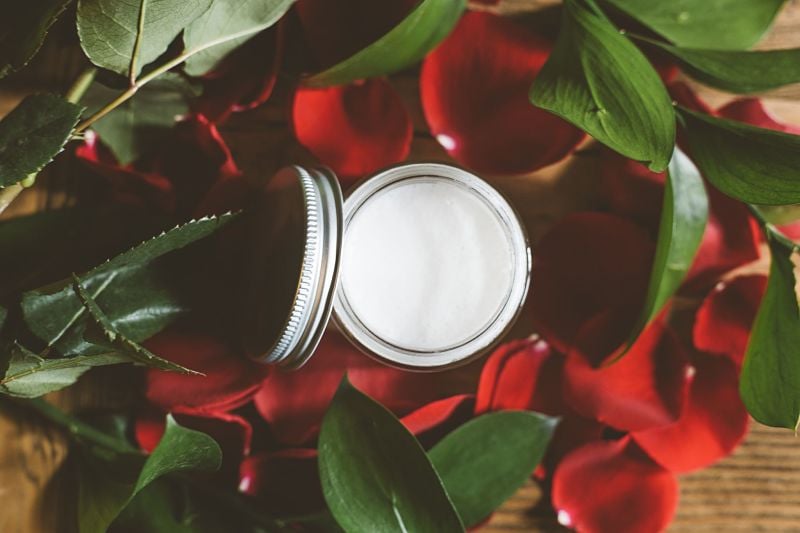Beauty shoppers are becoming more conscious about the ingredients used in their products and the impact they will have on their bodies and the planet, and cosmetic foundations are not an exception to this. In the next paragraphs, you will find out more about a more environmentally-friendly and effective way of formulating cosmetic foundations.
Cosmetic foundations are very important in the daily routine of American women, in 2018 it was reported that over 106 million women used them to improve their skin color and have a natural appearance, but the interest is growing and so the demand for more specific purposes. Finding the best foundation for sensitive skin has become the new challenge for consumers and suppliers.
Difference Between Conventional and ‘Green’ Foundations
The choice of ingredients in the making of cosmetics is a very important distinction; the use of petroleum sourced ingredients, ethylene/propylene derivatives and micro-plastics is a huge factor to not buy certain products. Using safe materials makes a big difference in the current market. For instance, we all have learned the dangers of micro-plastics in the ocean and what can cause to the environment the use of non-natural materials. All those factors play a role when desigining a foundation formula.
Most Common Types of Foundation Formulations
While looking for the best foundation for sensitive skin, we have to keep in mind that the many types of foundation makeup include liquid foundations – among others – and these are essentially two: oil in water and water in oil.
The most popular one is water in oil because the pigments used in the continuous oil phase feel less drying and have less agglomeration and a more even coverage on the skin. But in the past, oil in water foundations were more prominent. The reason for that was the development of better silicone-based polymeric emulsifiers and emollients that made it easier to stabilize water in oil emulsions.
Choosing the Ingredients in the Many Types of Foundation Makeup
Although water in oil continues to be the most common foundation sold around the globe, the consciousness about the environment is shifting the preference towards safe formulations. The ingredients of the typical water in oil foundation are the following:
- water,
- Humectants (1-10%)
- Emulsion stabilizers/electrolytes (0,5-3%)
- Emulsifiers (2-5%),
- Emollient/waxes (10-20%),
- Coverage pigments (5-20%),
- Color pigments/iron oxides (1-7%),
- Preservatives (0,5-5%)
- Others. If coated pigments are not used then pigment dispersing agents (0,5-1,5%) are also found. Sometimes sunscreens are also used.
However these ingredients are not enough to make the best foundation for sensitive skin. Luckily, we have prepared some general guidelines to formulate a natural water in oil foundation that works best for these times. Please keep the following in mind:
GENERAL GUIDELINES
- Use the lowest level of emulsifier needed, you can start with 5% and if possible reduce this amount to the minimum.
- Use co-emulsifiers to improve stability and reduce the size of particles.
- Add 0,5-1,0% of electrolyte to water phase and remember to keep internal water phase between 50-70% to have better stability.
- In order to improve stability, you can also add waxes or thickeners to the continuous phase.
- Remember that polyols can help the freeze/unfreeze stability.
- IMPORTANT: DO NOT OVER-HOMOGENIZE. Remember that after the emulsion is formed, the particle size for a proper stability is about one to four microns, if emulsions are spread more coarsely they tend to separate.
- Add water to the oil phase in a very slow manner.
- Since plastics can cause problems, test stability in the package to be used.
Recommendations for Sensitive Skin
The following recommendations will definitely help you in the endeavor of getting the best foundation for sensitive skin. Please take note:
- Use naturally produced humectants or glycerin. Look for microemulsions like Dermanet to mantain Glycerine moisturizing properties while improving sensory benefits.
- Use squalane or jojoba oil as natural emollients.
- Emulsion stabilizers like silica and emulsifiers like tri hydrogenated trilinoleate are also good to use
- Use coated ingredients for easier processing
- When non-coated pigments are used you can use polyhydroxystearic acid, polyglyceryl 6 polyricinoleate, or lecithin as dispersing agents


![Free ebook: The truth about biodegradable glitter [Click here and download now]](https://no-cache.hubspot.com/cta/default/4020212/b9c13b96-3024-4b35-9af9-cbd44d84ec15.png)


